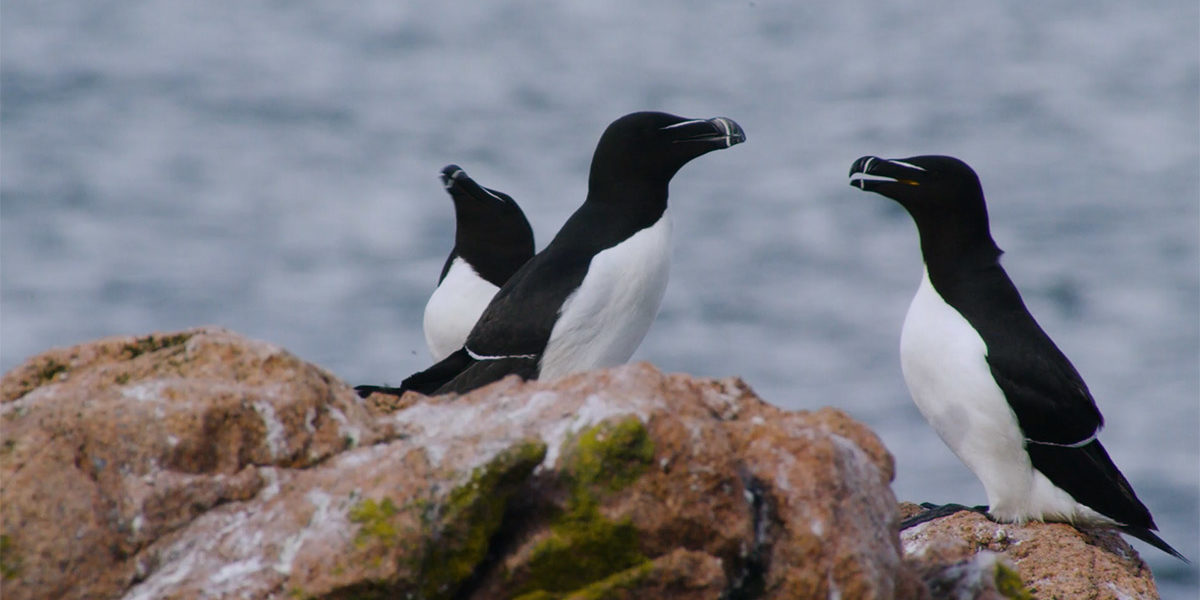The razorbill (Alca torda) is a small colonial seabird that can be found along the coast of Maine. They are easily identified by their black and white plumage and their distinctive “razor-like” bill. Razorbills are excellent swimmers and divers and can often be seen feeding in the Gulf of Maine’s coastal waters.
Here are 5 interesting facts about razorbills from your friends at Maine Coastal Islands National Wildlife Refuge!
Razorbills Can Fly Underwater
Like their close relative, the puffin, razorbills use their wings to “fly” through the water and their feet to steer in pursuit of their prey. They can propel themselves in short bursts, doing most of their hunting 20-30 feet below the surface to catch fish and other small marine creatures.
Razorbills are Monogamous and Mate for Life
Razorbills form long-term relationships, and pairs typically mate for life. They establish their nests on steep coastal cliffs. However, in Maine steep cliffs are somewhat limited and most razorbills nest in rocky burrows or crevasses on off shore granite islands. The female may only lay 1 single egg, sometimes 2 in rare instances. The parents take equal turns incubating the eggs.
Leaving the Nest is a Leap of Faith
When the time comes for a razorbill chick to leave the nest, they have to take a leap of faith. At around 20 days of age, although still unable to fly, it’s time for the chick to leave the nest with the male parent.
The down-covered chick will bravely leave their burrow and join the male. They continue to live out at sea with the male parent until they can fly and hunt on their own.
Razorbills Can Dive Over 300ft Below the Surface
Razorbills are accomplished divers and can reach depths of 330 feet in pursuit of their prey. They’re typically only submerged for 20 seconds during their hunting but can remain underwater for nearly an entire minute when necessary.
Razorbills Don’t Compete with Puffins or Guillemots for Food
Although razorbills, guillemots, and puffins share many similarities, they don’t typically compete with each other for food. Both puffins and razorbills eat the same fish which is primarily herring and hake. Black guillemots, on the other hand, love rock gunnel which is a small eel like fish.
Where Can I See Razorbills in Maine?
If you’re hoping to catch a glimpse of razorbills in Maine, your best bet is to take a guided boat tour around the islands in the Gulf of Maine.
Machias Seal Island is home to one of the largest razorbill colonies and is a popular destination among many of our highly recommended tour boat operators in the down east area. You’ll likely spot several other seabirds during your tour, including Atlantic puffins and black guillemots.
As you continue learning about razorbills, we hope you’ll be inspired to help us protect these fascinating creatures and their habitats! The Friends of Maine Coastal Islands National Wildlife Refuge is a non-profit community-run organization that works hard to support Maine’s coast through education, outreach, and various events.
Visit our website or stop by our Visitor Center or in Rockland to learn how you can get involved!







